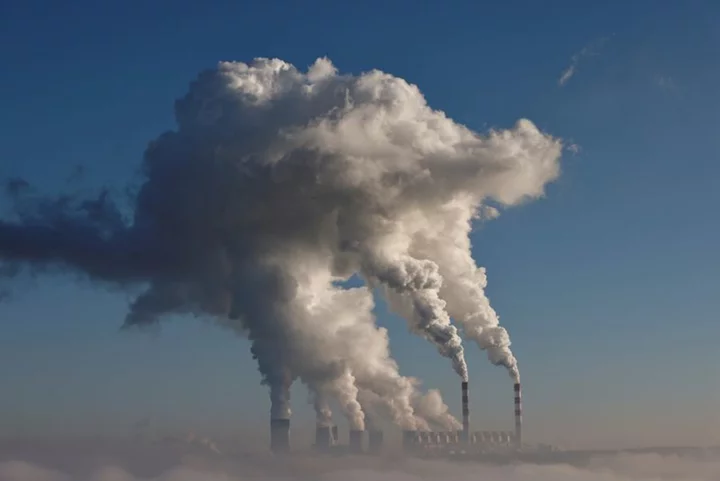LONDON Global energy demand rose 1% last year and record renewables growth did nothing to shift the dominance of fossil fuels, which still accounted for 82% of supply, the industry's Statistical Review of World Energy report said on Monday.
Last year was marked by turmoil in the energy markets after Russia's invasion of Ukraine, which helped to boost gas and coal prices to record levels in Europe and Asia.
The stubborn lead of oil, gas and coal products in covering most energy demand cemented itself in 2022 despite the largest ever increase in renewables capacity at a combined 266 gigawatts, with solar leading wind power growth, the report said.
"Despite further strong growth in wind and solar in the power sector, overall global energy-related greenhouse gas emissions increased again," said the president of the UK-based global industry body Energy Institute, Juliet Davenport.
"We are still heading in the opposite direction to that required by the Paris Agreement."
The annual report, a benchmark for the industry, was published for the first time by the Energy Institute together with consultancies KPMG and Kearny after they took it over from BP, which had authored the report since the 1950s.
Scientists say the world needs to cut greenhouse gas emissions by around 43% by 2030 from 2019 levels to have any hope of meeting the international Paris Agreement goal of keeping warming well below 2C above pre-industrial levels.
Here are some highlights from the report on 2022:
CONSUMPTION
* Global primary energy demand grew around 1%, slowing fromthe previous year's 5.5%, but demand was still around 3% abovepre-coronavirus levels in 2019. * Energy consumption grew everywhere apart from Europe,including Eastern Europe. * Renewables, excluding hydropower, accounted for 7.5% ofglobal energy consumption, around 1% higher than the previousyear. * The share of fossil fuels in global energy consumptionremained at 82%. * Electricity generation was up 2.3%, slowing down from theprevious year. Wind and solar power grew to a record share of12% of power generation, again surpassing nuclear, which fell4.4%, and meeting 84% of net electricity demand growth. * Coal's share in power generation remained dominant ataround 35.4%.OIL
* Oil consumption increased by 2.9 million barrels per day(bpd) to 97.3 million bpd, with growth slowing compared with theprevious year. * Compared with pre-Covid levels in 2019, oil consumptionwas 0.7% lower. * Most oil demand growth came from revived appetite for jetfuel and diesel-related products. * Oil production grew by 3.8 million bpd, with the lion'sshare coming from OPEC members and the United States. Nigeriasaw the largest decline. * Oil refining capacity grew by 534,000 bpd, mainly innon-OECD countries.NATURAL GAS
* Amid record prices in Europe and Asia, global gas demandfell 3% but still made up 24% of primary energy consumption,slightly below the previous year. * Gas production was stable year-on-year. * Liquefied natural gas (LNG) production was up 5% at 542billion cubic metres (bcm), a similar pace to the previous year,with most growth coming from North America and the Asia-Pacificregion. * Europe accounted for much of LNG demand growth, increasingits imports by 57%, while countries in the Asia-Pacific regionand South and Central America reduced purchases. * Japan replaced China as the world's largest LNG importer.COAL
* Coal prices hit record levels, rising 145% in Europe and45% in Japan. * Coal consumption rose 0.6%, its highest level since 2014,driven mainly by Chinese and Indian demand, while consumption inNorth America and Europe declined. * Coal output was 7% higher than the previous year, withChina, India and Indonesia accounting for most of the growth.RENEWABLES
* Growth in renewable power, excluding hydro-power, sloweddown slightly to 14% but solar and wind capacity still showed arecord increase of 266 gigawatts, with solar taking the lion'sshare. * China added the most solar and wind power.EMISSIONS
* Global energy-related emissions, including industrialprocesses and flaring, were up 0.8% reaching a new high of 39.3billion tonnes of CO2 equivalent.MINERALS * Lithium carbonate prices jumped 335%. Cobalt prices wereup 24%. * Lithium and cobalt production rose 21%.(Reporting by Shadia Nasralla; editing by Philippa Fletcher)









